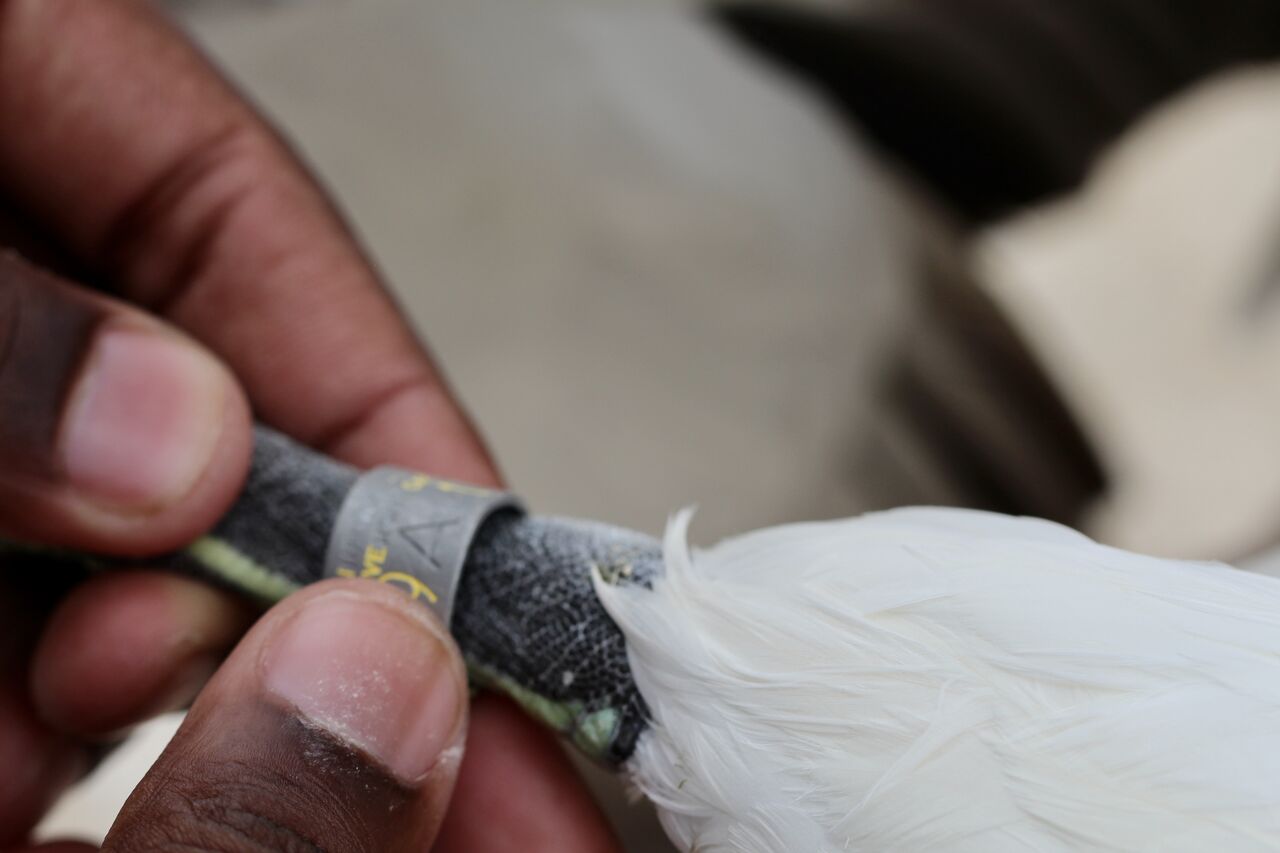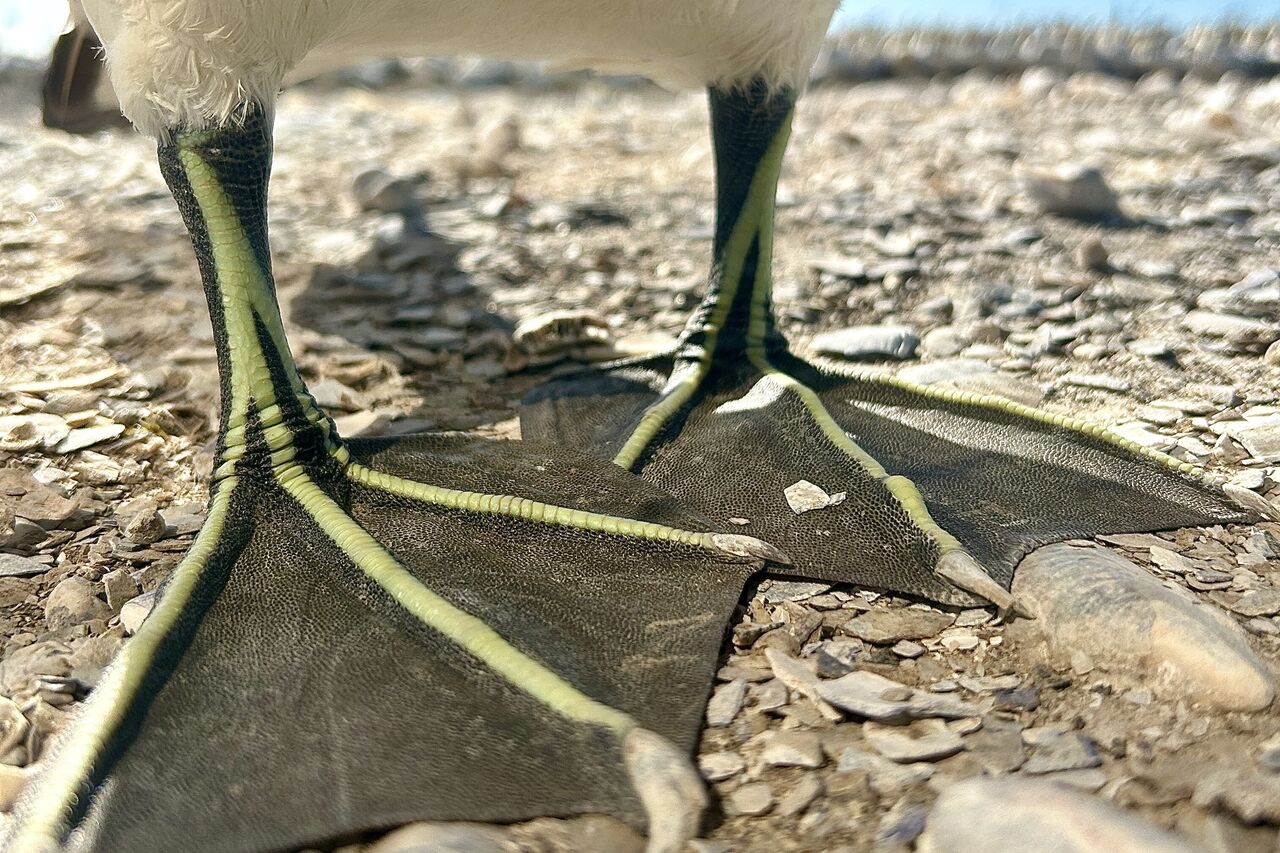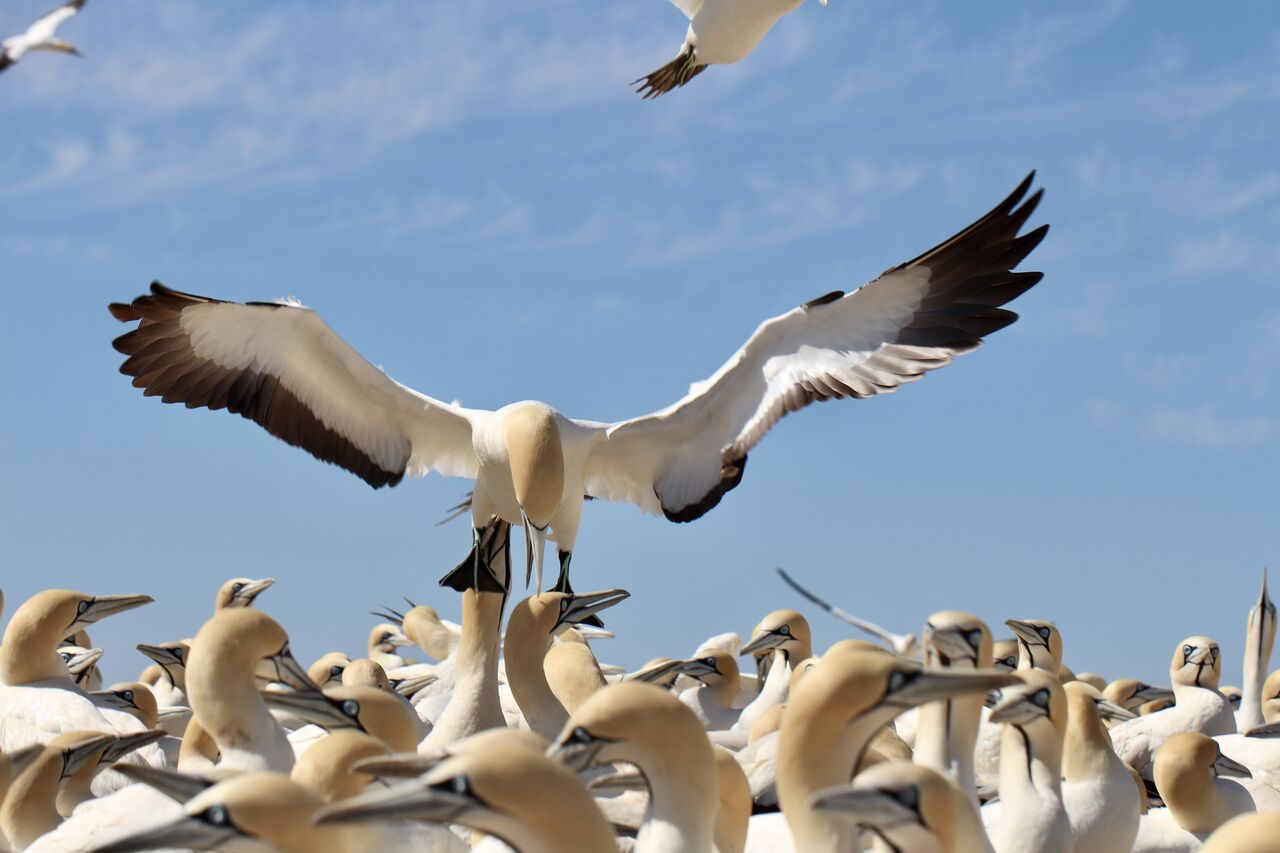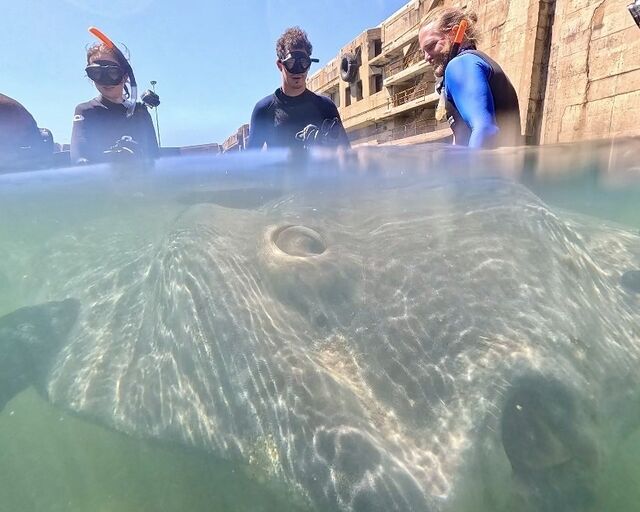What happens during Cape gannet fieldwork on Bird Island, Lambert’s Bay?
In October and November, Marine Wildlife Management Programme (MWMP) Assistant, Martine Viljoen, assisted the Department of Forestry, Fisheries, and Environment (DFFE)’s Oceans and Coast team with their Cape gannet fieldwork! Let’s hear about the experience from Martine…
Bird Island in Lambert’s Bay is one of only six sites worldwide where Cape gannets breed! It is also the only breeding site that offers the public the rare opportunity to easily view these blue-eyed seabirds up close from a lookout point. October is entering peak season for Cape gannets on Bird Island, with their population numbers appearing very healthy!
Spending time with the DFFE team on Bird Island was a fantastic opportunity to build on my existing skill set – I gained valuable knowledge from the accomplished Leshia Visagie while bolstering the MWMP’s relationship with DFFE with whom we work closely.
In our time on the island, the team completed numerous tasks. We recorded feather moults to monitor which gannets were moulting at the time and collected diet samples.
We also aided in the future identification of breeding Cape gannets. Thousands of the gannets had been identified by the South African Bird Ringing Unit (SAFRING) metal rings around their legs. During this recent fieldwork, the team added extra rings to the Cape gannets that were in the first year of breeding. This allows researchers to track their lifecycle, habits, populations, and movements.

Nesting Neighbours
Cape gannets are known for their unique nesting habits. They breed in unusually close proximity to each other compared to other birds. Their nest mounds and hollows are made of guano: an effective building material which cannot be stolen by neighbouring gannets, as twigs would.
During October, we observed various partnered individuals starting to incubate single eggs on their guano nests. Gannets diligently incubate their single egg for approximately 40 days, with this timing being critical to ensuring the proper development and survival of the egg.
Gannets use their unique black webbed feet for protection and warmth. They use their footwebs to encircle their egg, creating a protective barrier against the elements and potential predators. The blood vessels in their feet serve to keep their eggs warm.
October and November are great times to visit the colony if you have not yet done so, as you get a unique opportunity to see them nesting together.

Fishy business
Cape gannets may travel up to 100km from Lambert's Bay to find enough food for their chicks. They need to catch more fish than usual to feed their growing offspring, which they do by regurgitating partially digested fish into their eagerly awaiting mouths. Visitors to Bird Island can get an excellent vantage point to observe the movements of these gannets from the well-situated lookout hide.
Crash Landing
Cape gannets possess a remarkable skill to effortlessly locate their nests within the bustling colony.
Before appearing to drop in on their neighbours, gannets employ a clever strategy: flying low, circling over their nest site while emitting a distinctive call several times before landing. This approach helps reduce stress and maintain peace for both their neighbours and partners.

Fascinating Feathers
Cape gannets undergo a sequential moult, replacing feathers gradually rather than all at once. This contrasts with our African penguins that experience a catastrophic moult replacing all feathers in one go. This process helps Cape gannets maintain their flying capabilities while their plumage renews itself, compared to African penguins who are left temporarily vulnerable and non-waterproof for those 2-3 weeks till their plumage sufficiently regrows.
This was an incredibly educational and valuable experience!
Related News
Sign up to our Newsletter
Receive monthly news, online courses and conservation programmes.




